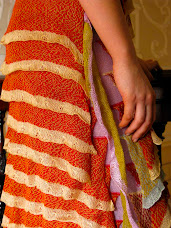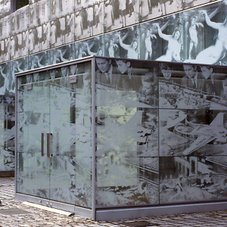Eu countries are making serious efforts to become sustainable. When one checks into a hotel, the electronic key card must be inserted into a utility slot to operate the electricity, ensuring no lights or lamps are left on when one leaves the room. Very sensible. This same system was also used at the very pleasant hotel in Edinburgh, Apex European on Haymarket and elsewhere throughout the EU, Hamburg, Berlin, Stockholm, Helsinki, Tallinn, among other cities. Of course every hotel in the EU has encouraged guests to re-use linens for the past 11 years.
An online Free Trade service is offered by Dublin’s waste management department, and allows one to pass on or pick up unwanted goods free of charge. http://www.dublinwaste.ie/ The online database allows one to browse for a specific item or list unwanted furniture, etc. that includes a description and photograph of item. What a fabulous idea, it’s so simple and logical. This service certainly eliminates some waste, how often does one feel guilty about adding clothes or whatever to recycling.
Historic preservation, another sustainable building practice, is evident in Dublin. Newly developed neighborhoods such as Ballymun are experimenting with various green projects. Ballymun earned the national title as ‘Green Community’ in 2008. The program also focused on resource recovery, featuring recycled furniture and fashion.
There is a sustainable fashion venue Summer ’09 according to one of the planners, the brilliant designer, Lisa Shawgi, who has also been instrumental in managing The Loft, http://www.dceb.ie/news/the-loft-~-a-haven-of-dublin-fashion- where she, Matt Doody, and other Dublin designers have a retail venue. http://www.mattdoody.com/Matt_Doody/Matt_Doody.html
More and more designers are becoming committed to fair trade by supporting workers in their own countries, instead of searching for the cheapest labor abroad. Shawgi is training women in a community center to learn hand loomed machine knitting to produce her knitwear. http://www.lisashawgi.com/
In terms of fashion, Dublin, and Ireland in general, continue to produce hand knit aran sweaters made by Irish knitters, also providing employment and maintaining their cultural heritage. http://www.inismeain.ie/en/knitting/index.htmlhttp://www.aranislands.ie/component/option,com_estateagent/Itemid,0/act,object/task,showEO/id,177/
To combat litter, Dublin Waste Management has set a recycling target of 60% for the region which may be feasible because of another concept, Bring Banks. Households may bring objects that are not collected in green refuse collection, such as glass and textiles, and BATTERIES!
The digital bane of ecomodista’s existence, especially using an external flash for two digital cameras, the Canon 5d II and a G10 is batteries. The amount of energy spent will be calculated in several months, but between these, the flash, the laptop, and the cell phone, one clearly uses more energy, not less going digital versus analog. ecomodista was disappointed upon discovering the digital Hasselblad had an effective ISO 100, clearly not designed for location work.
copyright carla breeze 2009













